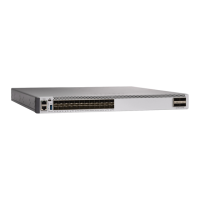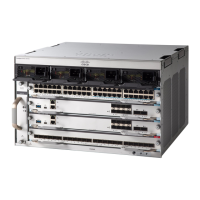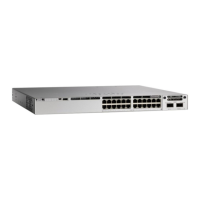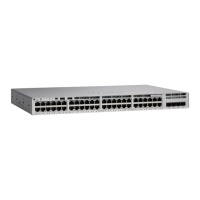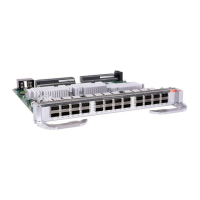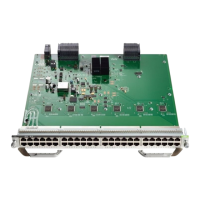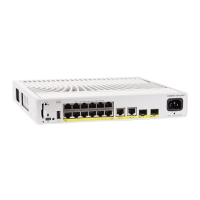Default SettingFeature
Enabled.Log adjacency changes
None specified.Neighbor
Disabled. All outgoing LSAs are flooded to the neighbor.Neighbor database filter
Disabled.Network area
Enabled. Allows Layer 3 switches to continue forwarding packets from a
neighboring NSF-capable router during hardware or software changes.
Nonstop Forwarding (NSF)
awareness
No OSPF routing process defined.Router ID
Disabled.Summary address
240 seconds.Timers LSA group pacing
spf delay: 5 seconds.; spf-holdtime: 10 seconds.Timers shortest path first (spf)
No area ID or router ID defined.
Hello interval: 10 seconds.
Retransmit interval: 5 seconds.
Transmit delay: 1 second.
Dead interval: 40 seconds.
Authentication key: no key predefined.
Message-digest key (MD5): no key predefined.
Virtual link
Configuring Basic OSPF Parameters
To enable OSPF, create an OSPF routing process, specify the range of IP addresses to associate with the
routing process, and assign area IDs to be associated with that range. For switches running the Network
Essentialsimage, you can configure either the Cisco OSPFv2 NSF format or the IETF OSPFv2 NSF format.
Procedure
PurposeCommand or Action
Enters the global configuration mode.configure terminal
Example:
Device# configure terminal
Step 1
Routing Configuration Guide, Cisco IOS XE Everest 16.6.x (Catalyst 9500 Switches)
93
Configuring IP Unicast Routing
Configuring Basic OSPF Parameters

